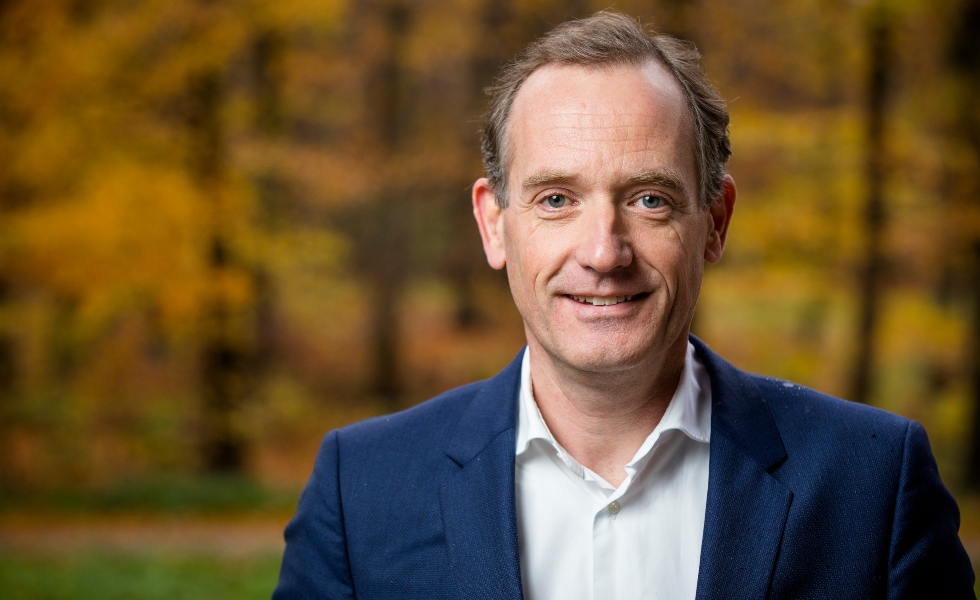Stephan Langen: Get out into the countryside if you want to make an impact
Stephan Langen: Get out into the countryside if you want to make an impact

This column was originally written in Dutch. This is an English translation.
By Stephan Langen, Head of Portfolio Management at ASN Impact Investors
In Scotland, on the western shore of Loch Ness, I was confronted with a thought-provoking reality this summer: as an investor in natural capital, you have to get out of the office and into the real world to understand what you are investing in.
My visit to the Bunloit Estate during my holiday in the Scottish Highlands was literally boots on the ground. Jeremy Leggett, founder of Highlands Rewilding and winner of this summer's Blue Planet Prize 2025, showed me how biodiversity is being restored there.
Dark pine forests where hardly any sunlight penetrated have been thinned out or replaced by native deciduous trees, allowing the soil to recover and low vegetation to flourish. In other places, planted forests are being completely cleared. Dried-out peatland can then recover to its natural, marshy state. Wildlife, the variety of herbs and insects: everything is on the rise thanks to the ambitious rewilding project.
Blades of grass are data
It's all demonstrable, based on data. I've seen it with my own eyes: data are the blades of grass, herbs, beetles and other creatures that are counted on a defined plot of land. Data are the camera images of wildlife passing by, the sound recordings of birds, the diameters and heights of the trees in the area.
It confronted me with an uncomfortable truth about how we as investors approach biodiversity. Too often, we have to rely on satellite images that give us an overview from a height of hundreds of kilometres, but no insight into what is really happening on the ground.
Impact based on science
At the office, we work with models: generic, albeit scientifically validated, assumptions. There we are, working with them at the office, without seeing any tangible evidence of the impact of our investments. We buy funds and companies with a biodiversity policy, but without “boots on the ground”, we don't know what data we are looking at or what it means for actual nature restoration.
Counting blades of grass and animals may sound simplistic, but making an impact on biodiversity is all about the change you are striving for. Scientists determine what interventions are needed to restore biodiversity and what data makes that measurable. It is impact based on science, measured with data that is actually collected in the field.
Return on natural capital
What also impressed me was the Leggett team's undogmatic approach. Nature restoration sometimes works counterintuitively. Planting pine trees causes peat soil to dry out, which generates CO₂ emissions. You therefore have to remove a forest to restore the soil. On balance, this works better for nature and emissions.
I was also very pleased with the ingenuity with which the revenue models are being developed to ensure that investing in natural capital also yields financial returns. In Scotland, for example, parties that build wind farms and thereby damage biodiversity can compensate for that damage by purchasing nature credits from rewilding projects.
Rewilding as a Service
Highlands Rewilding developed those first projects on its own land, but has since developed an even more scalable model: “Rewilding as a Service”. Local landowners who want to restore their land become partners and share in the proceeds from the nature credits this generates. Now that's an asset-light strategy!
This initiative does not yet have the scale that we institutional investors would like to see. However, that is only a matter of time. As with any investment, early adopters can achieve the highest returns and fulfil their role as frontrunners. In the meantime, by getting out there, we are learning how real impact is achieved and that revenue models are possible thanks to credits that are robust and reliable. Don't be too dogmatic if you want to make maximum impact; be more proactive. Explore the real world behind all your data.
At your next retreat, actually go out into the countryside.
Stephan Langen is Head of Portfolio Management at ASN Impact Investors. The information in this column is not intended as professional investment advice or as a recommendation to make certain investments.










